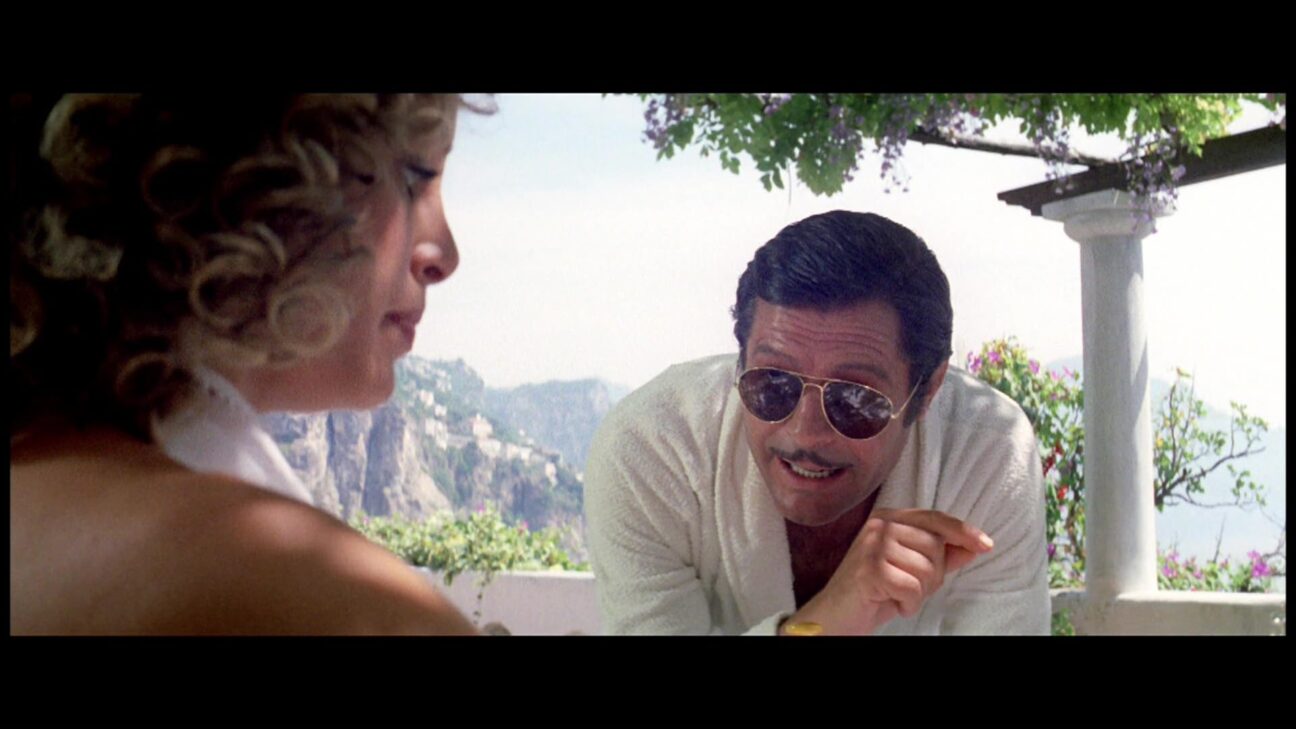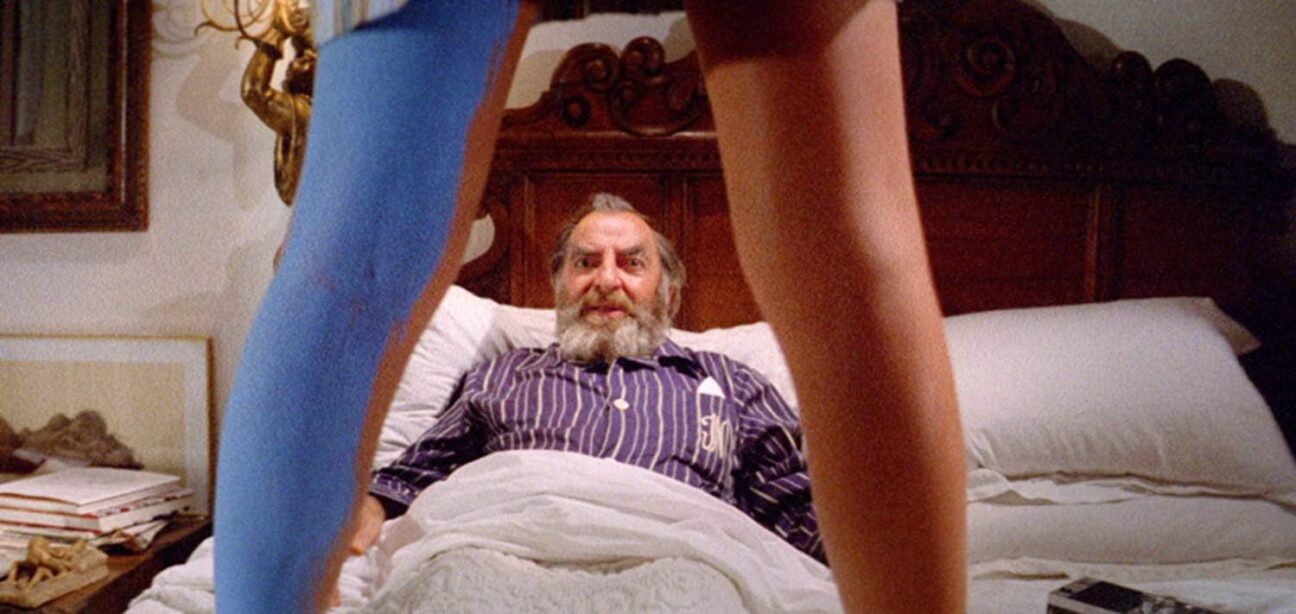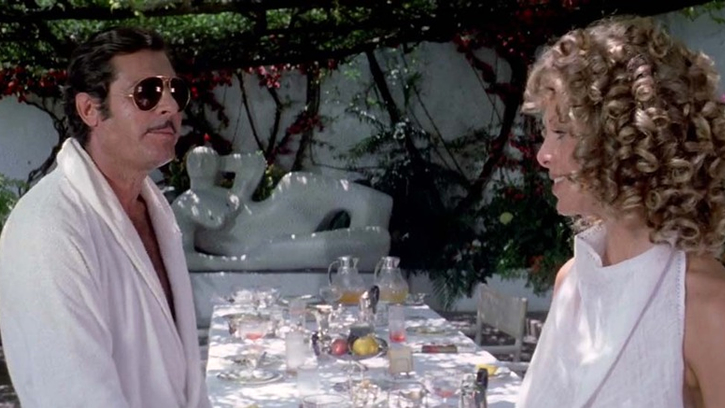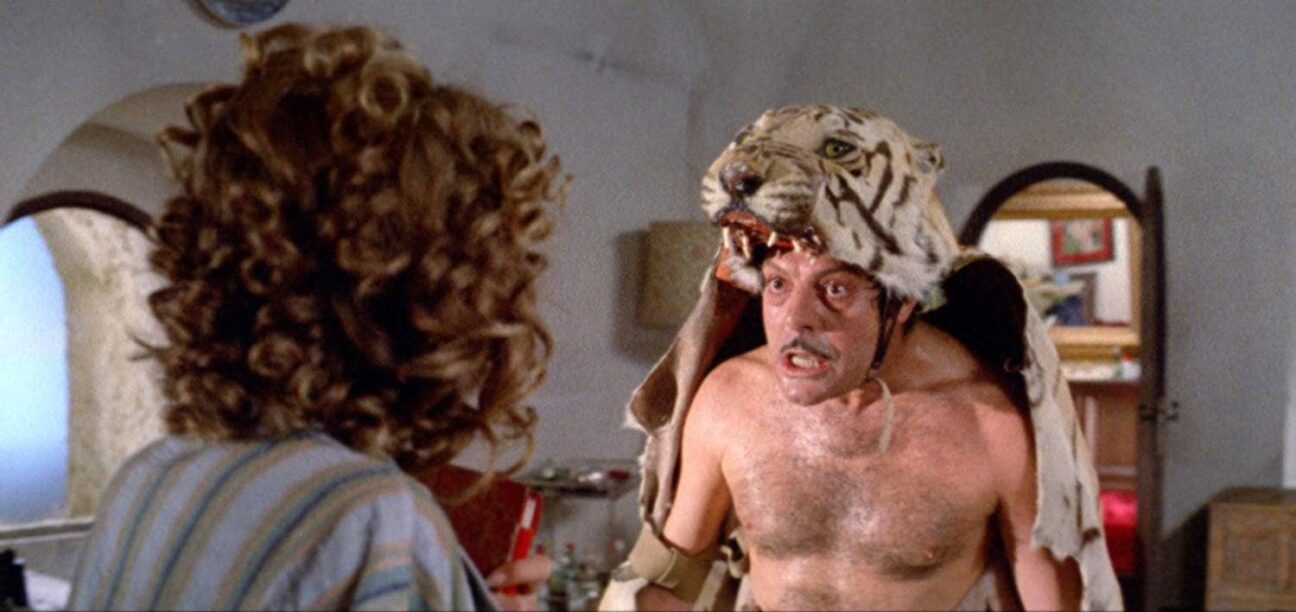On a dark and sultry Italian night, an American tourist Nancy (Sydne Rome), hitchhiking,narrowly escapes a sexual assault and stumbles upon an unruly private villa. What follows is reminiscent of a Lewis Carroll scenario, yet the Mad Hatter is reimagined as a retired pimp, and the motley company comprises Nietzsche-loving nudists, a freakish priest, a group of degenerating youths, and a demented owner whose death is eagerly anticipated by the eccentric residents. The appearance of the stranger does not surprise anyone; her sexuality, too obvious and deliberate, becomes a magnet for passion, envy, and mockery.
Diary of Forbidden Fantasies: Sensual Surrealismin Polanski’s Che?

Che? is one of the most controversial and lesser-known films in Roman Polanski’s repertoire. Unlike his more structured works, both early and late, which often draw from literary sources, Che? was created without a script, relying heavily on the actors’ improvisations. In the United States, it saw a limited release a year after its creation, while in Poland, the Polanski’s homeland, it was nevershown. On various databases, its audience rating rarely exceeds six stars out of ten. According to a legend, the film was initially titled “Diary of Forbidden Fantasies,” and the puzzled exclamation ‘Che?!’ was producer Carlo Ponti’sreaction upon first viewing the edit.

The metaphor of freedom permeates the narrative, reflecting in the characters’ behaviors, morals, and relationships. In many ways, the film explores territories of nonsense mastered by Buñuel, Fellini, and Švankmajer, and often ventures beyond their boundaries. The film’scharacters are driven by carnal desires, withthe heroine’s liaison occurring with Coco, portrayed by Marcello Mastroianni with an expression of world-weariness, a symbol of Euro-decadence. He immediately proposes “doing something together” and invites Nancy to his abode, where engages her in bizarre role-playing games, draping himself in a tiger skin and demanding to be whipped.

In the film, the boundary between fantasy and reality is hopelessly blurred; it is an endless grotesque—a celebration of absurdity set in the locale one wishes to see in every other Italian film. It feels as though the director, accompanied by a camera and a merry band, ventured on vacation and decided to amusehimself by filming a surreal opus. Most likely that’s exactly how it was: Polanski, known for overspending budgets, made the film cheaply, completing shooting ahead of schedule.
The film has faced criticism for its fragmented plot and perceived triviality, accused of failing to convey significant meaning. But what coherence can one expect from a dream? Critics argue that Polanski projected a collection of his personal fetishes onto the screen, yet these fetishes are equally a byproduct of the collective unconscious of the 60s and 70s.

With his obsession for bohemian life, Polanski uses visual language to distort its accompanying attributes: the allure of contemporary art, the availability of excesses, an insatiable thirst for power, and experiments with perversions—the pernicious games of aestheticizing elites. It is interesting to consider Che? as Polanski’s break with hippie culture, revealing that even in a world of free love, coarseness and falseness can manifest. In the film’s finale, at the “mad tea party,” the nearly naked heroine is bewildered by the hush-hush mockery of others. Her feminine curiosity and naivety become too easy a prey for mediocrity and idleness that ripen into violence. Nancy manages to escape once more—an escape that hardly resembles an expulsion from paradise.
Che? is a dream that holds meaning only for the dreamer, yet it evokes a fetishistic interest in those who hear its retelling. Polanski’s jeu d’Esprit is a frivolous artifact and perverse amusement, whose rules should not be taken too seriously.





